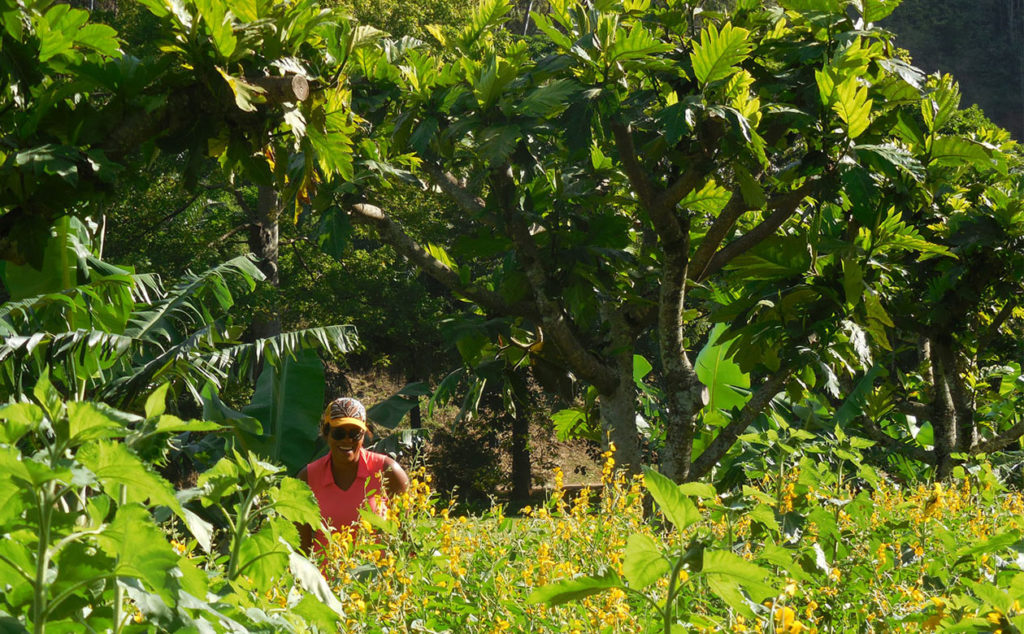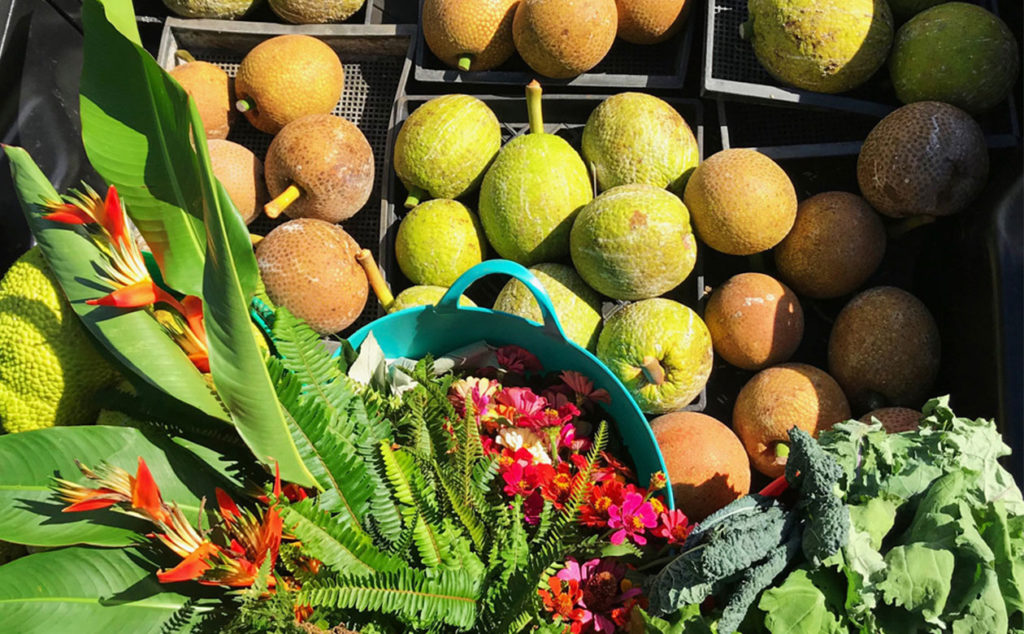The Regenerative Organic Breadfruit Agroforestry demonstration in McBryde Garden on Kauai celebrates its Third Anniversary this month. This project transformed the Breadfruit Research Orchard of 24 accessioned breadfruit and breadnut trees into a biodiverse, multi-layered, productive agroforest that changes over time and space.

Shade-Grown, Heritage, Contemporary, and Regenerative, are the four agroforestry themes with the latter encompassing the entire 2-acre area. The primary goals of regeneration are improving soil health and structure and increasing carbon storage and biodiversity, which in turn advances plant health and resilience. The demonstration is actively managed and monitored. Data are recorded to quantify productivity and yield of plants as well as soil sampling to monitor carbon storage, soil biodiversity, and fertility. Noel Dickinson, Breadfruit Institute Research Technician & Agroforestry Project Manager, is responsible for oversight and direct maintenance of the demonstration. Since November 2019, she has been assisted by Graham Talaber, who participated in NTBG’s 2019 Fall Intern Program.
The demonstration is a dynamic, productive system, and must be managed as a “working farm” with year-round growth of plants and production of crops that must be regularly harvested. The regenerative practices implemented since the onset of the project have resulted in increased productivity of breadfruit and other crops with a commensurate increase in labor required to harvest and document yields (counts and/or weights).

Labor-intensive, short term, vegetable, and other crops are being replaced with longer-term high-value crops and plants for biomass. Every plant in the agroforest, especially fast-growing woody and semi-woody species are specifically grown to be “cut and dropped” in place, and so-called “weeds” contribute to soil regeneration by contributing biomass that is re-used as mulch. New species added to the agroforest are carefully selected using the criteria of: will they yield income for producers, enhance soil health, and/or produce labor savings?
Since August 2017, more than 100 species of short- and long-term crops and other plants have been planted. Nearly 9,000 lbs. of breadfruit, 7,000 lbs. of 55 species/varieties, and 1,300 ornamentals, have been given to staff, volunteers, interns, and students at NTBG. These harvest totals include 2 tons of breadfruit, bananas, and papayas donated to Kauai Food Banks.
The demonstration serves as a living laboratory for producers, agriculturists, chefs, entrepreneurs, home gardeners, community organizations, researchers, students, visitors on tours, and others interested in learning about breadfruit, breadfruit agroforestry, and regenerative organic agriculture. Since March 2020, adopted appropriate measures to respond to the realities of COVID-19 with health and safety of staff and plants foremost, and on-site educational activities have been limited. Outreach via social media has increased to continue to reach and serve this audience.
Information Resources produced to complement the demonstration—Breadfruit Agroforestry Guide, Fact Sheet, and Agroforestry Standards published in the open-access journal Sustainability—are all available as downloadable PDFs here and widely disseminated. We are grateful to the Hawaii Department of Agriculture (Year 1) and Patagonia Provisions through Patagonia’s Environmental Grants Program (Year 1-on-going) for their financial support. This project owes its success to the hard work of the Breadfruit Institute team (Noel Dickinson, Juliana Prater, Graham Talaber) and the scores of staff and volunteers who have helped in so many ways.